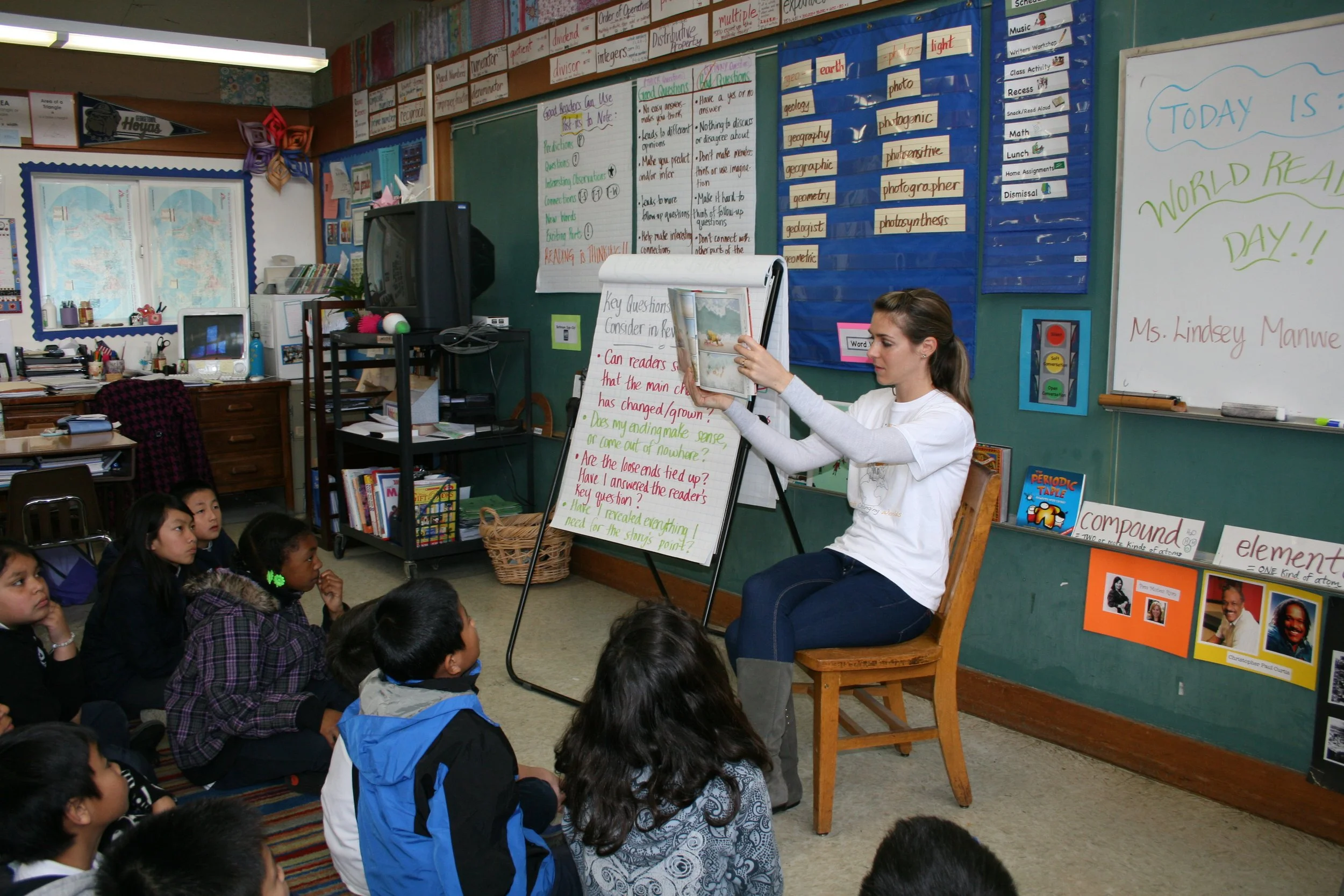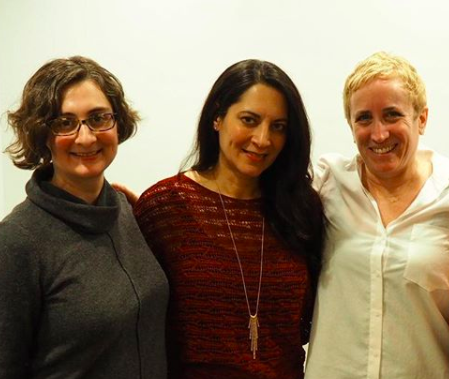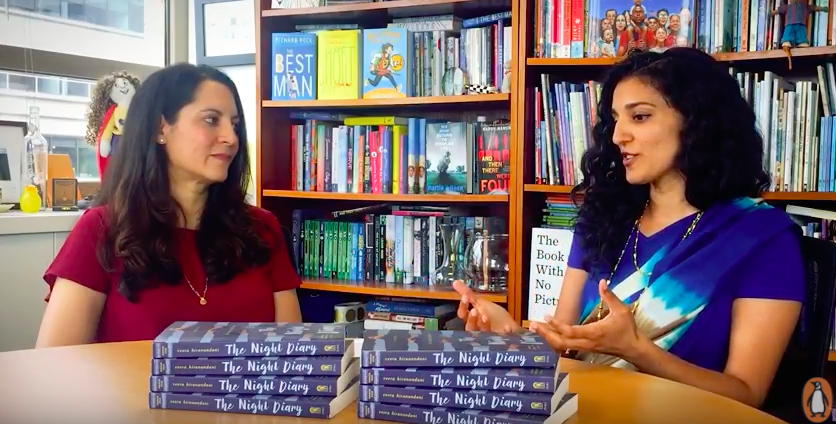Our Storytelling & Advocacy Coordinator, Jake Adler, recently had an opportunity to sit down with critically acclaimed author Veera Hiranandani. They discussed her newest novel, The Night Diary, South Asian history, the art of writing for children, the unique challenges kids around the world are facing today, and what it all has to do with LitWorld’s 7 Strengths.
“Writing about Partition is something I wanted to do for a long time,” said Veera Hiranandani, author of one of the newest—and most original—middle-grade novels to hit store shelves, The Night Diary. The novel takes the form of a personal diary authored in 1947 by 12-year old Nisha, a young Indian girl whose nation, home, and worldview are split and transformed at the end Great Britain’s colonial reign and the first days of the India’s independence, an event known as Partition.
“There aren’t a ton of books for young people about Partition. That's in part why I wanted to write one, to create a space in homes and classrooms to have discussions about it. It’s important to keep this history alive because of what it can teach—namely that we don't want to repeat it,” she said.
“It’s something I always heard about growing up,” Hiranandani continued, “My father went through that history—he was forced to flee his home with his family.”
India’s independence brought about the formation of a new nation, Pakistan, carved out of northwestern India as a new homeland for Indian Muslims, leaving the rest of India to Hindus, Sikhs, and other non-Muslim Indians. Hindus and other non-Muslims living in Pakistan and Muslims living in India prior to independence were pushed to migrate to their new, respective homes as a sovereign India and a newborn Pakistan established themselves on the world stage. Violence, chaos, and tragedy plagued the countless travelers as their paths crisscrossed over a border which appeared overnight.
“When I was 11, I watched the movie Gandhi, which was pivotal for me. I always knew Partition was something that had happened to my family, but I hadn’t realized how huge the event was on a global scale, and I was shocked as I began to reflect on it,” said Hiranandani.
Hiranandani’s protagonist, Nisha, faces a unique challenge to her identity: her father is Hindu, but her late mother was Muslim. Throughout the novel, Nisha questions what this heritage makes her. Her grappling with identity and place of belonging in a rapidly changing world is one Hiranandani can relate to, herself the daughter of a Hindu father and Jewish-American mother.
Source: The Sun
“As I got older, I wanted to know more about the Indian side of my family,” said Hiranandani, “but it felt easier to focus on what we all had in common, which was being an American in Connecticut. A lot of my Indian cousins had two Indian parents and more solidly identified as Hindus. While spending time with them in their homes, I’d see and observe things specific to Indian culture, and I’d go to temple with them sometimes. I wondered why we weren’t doing those things in my family.”
Hiranandani conducted historical research as she prepared to write the novel, but she also drew inspiration from her father, now 80, and his personal memories of Partition from his early childhood. “As a writer, I wanted to figure out how to frame this story for younger readers, “ she said, “My father was 9 when he went through Partition, so the memories I heard from him were childlike.”
“The book came together through trial-and-error,” Hiranandani explained. “I didn't know if I could take it on; I’m not a historian, I didn't know if I could do it justice, I was intimidated and nervous, but the drive to write about it persisted. In the first drafts, the protagonist was a young male character, like my father as a child, but I felt like I wasn't able to access that character enough, he wasn't becoming real enough to me. Eventually, he sort of moved over and became the brother of a new protagonist: Nisha, who is closer to who I am, so I was able to access her in a more intimate way and that felt right.”
“The intimacy of a diary is something I wanted to experiment with, but I didn't know who Nisha was writing to. As her character developed, I realized she would be addressing her late mother, and from there everything clicked. The story really started coming.”
Partition isn’t just South Asian history, it’s world history, and Hiranandani feels the subject and story has a lot to offer readers of all ages, regardless of their heritage.
“A whole new generation of kids are losing out on the lessons they can learn from this history,” she said, “The generation that lived through Partition won’t be here much longer, and I want to make sure young people know about it, because there is so much we can take from it today. Partition can teach us how fragile everything is. Our sense of safety is a bit imagined, I think, and our society can change overnight both positively and negatively.”
“There’s no clear ‘good guy’ and ‘bad guy’ in Partition,” she offered, “The lives that were lost are on everyone’s hands. It's a different kind of story in that way, it showcases the best and worst of humanity.”
LitWorld's Executive Director Dorothy Lee (left) with Veera Hiranandani (center) and LitWorld's Founder, Pam Allyn (right).
The scars Partition inflicted on South Asia are still sore and tender today, as the history is blanketed in stories of violence and cruelty inflicted by both Hindus and Muslims. Such themes are tricky to weave into a novel intended for a middle-grade audience, but Hiranandani feels striking a balance is as necessary as being forthright about true events with young readers, even if they can be difficult to understand and, in some cases, uncomfortable.
“The parent in me has a desire to protect kids from these themes, but I also feel I must be truthful about the extraordinary violence,” she explained, “I wanted to touch on some of these truths, but I also did not want to create something traumatizing for readers. It’s about balance: children can understand much more than many grown-ups think. Kids have a lot of questions about why these things happen, what happens to the people involved, and they want to talk about it. There are boundaries, certainly—some readers will feel the content is just right, some won’t, and some will even think I haven’t gone far enough, but I hit the note I wanted to hit in the book.”
Today’s children all over the world continue to face unique and ever-evolving challenges, and Hiranandani hopes Nisha’s journey and bravery can serve as an example and an inspiration for her audience.
“When I first read about LitWorld’s 7 Strengths, I was checking off all of these aspects in Nisha’s journey. Not just one—all struck a chord,” Hiranandani explained.
“For Belonging, Nisha is losing her home, and is wondering what her new home is going to be, where and how she fits in to this new country and how she can possibly reconcile and merge her multiple identities. And her Courage is obvious: she discovers how brave she is, walking through the desert and pushing forward despite intense hardship. She finds the Confidence to be herself, to use her voice out loud and in her diary. And there’s a lot of Hope. Partition can seem so sad and hopeless, but then there’s incredible stories of Kindness scattered throughout its history that are so important to highlight, because these are the stories that keep us going and help us connect to what is best about being human.”
Author Veera Hiranandani (left) in conversation with her editor, Namrata Tripathi (right). Source: YouTube
The history is rooted in the mid-20th century, but part of the urgency Hiranandani feels to deliver this story to modern audiences comes from how much the events of Partition resonate and ring true with today’s culture and society.
“I’m in awe of the strength of Emma González and the other young survivors of the recent shooting in Parkland, Florida,” she said, “When you go through something traumatic, you are forced to rely on yourself in a way you didn't know you could. Nisha always feels like she’s not brave enough, but at the end, she realizes that she’s much braver than she thought she was or could be. She finds a new space for courage because she’s forced to.”
“I wish all children and young girls could be shown how powerful they really are, and I wish they didn't have to discover it through trauma. I hope a young girl reading my book will understand that simply going through life, no matter the obstacles, and pushing through, is itself a courageous act.”
Hiranandani continued: “People are opening their eyes to a ‘diverse diversity’—a multitude of stories from all around the world. Partition is being taught now, from what I hear, more than ever before. People understand that it can be a useful piece of history to learn about.”
“[The Night Diary] can teach you about India and Partition, but also, the story is specific, and the more specific a story is, the more universal and relatable it is. Nisha has a doll, she argues with her brother, she has questions and feelings that any kid can relate to. When you hear about someone who is a refugee as a kid, or you learn about a war or a divisive moment in history, it’s always made up of these very specific people and homes and lives that are universal. I wanted to humanize the story as much as possible. In doing so, it makes the history and characters less ‘othered,’—readers without a South Asian heritage can still relate to Nisha; they can think, ‘I know what it’s like to wish I had more friends,’ or, ‘I know what it feels like to be shy in school,’ and ‘in a way, she’s just like me.’”
“Empowering children to tell their own stories is vital,” Hiranandani concluded, “Nisha is a child who never thought she could do it, but she is made forever stronger because she does.”
Veera Hiranandani is the author of The Night Diary (Dial), The Whole Story of Half a Girl (Yearling), which was named a Sydney Taylor Notable Book and a South Asian Book Award Finalist, and the chapter book series, Phoebe G. Green (Grosset & Dunlap). She earned her MFA in fiction writing at Sarah Lawrence College. A former book editor at Simon & Schuster, she now teaches creative writing at Sarah Lawrence College's Writing Institute and is working on her next novel.


























